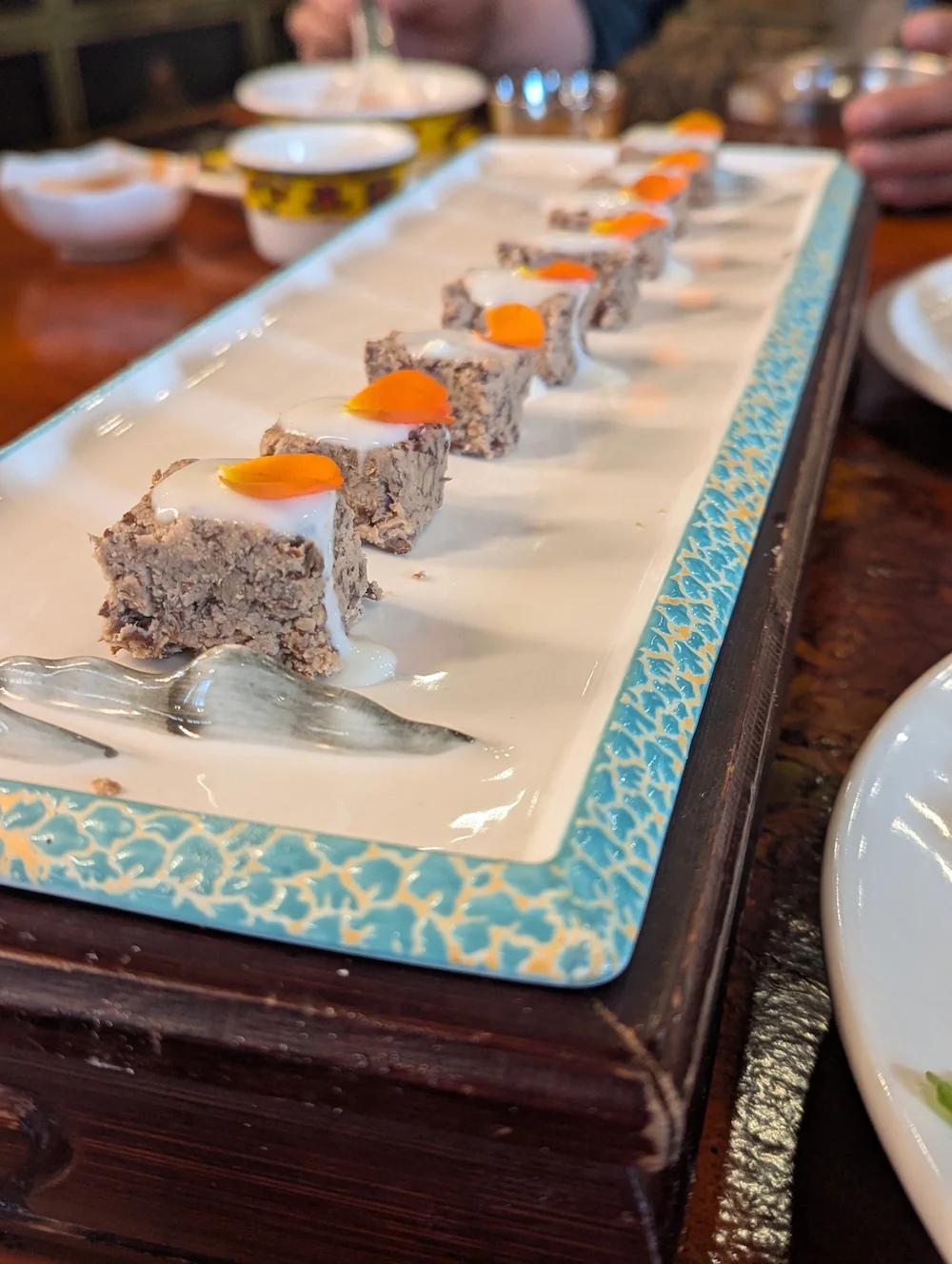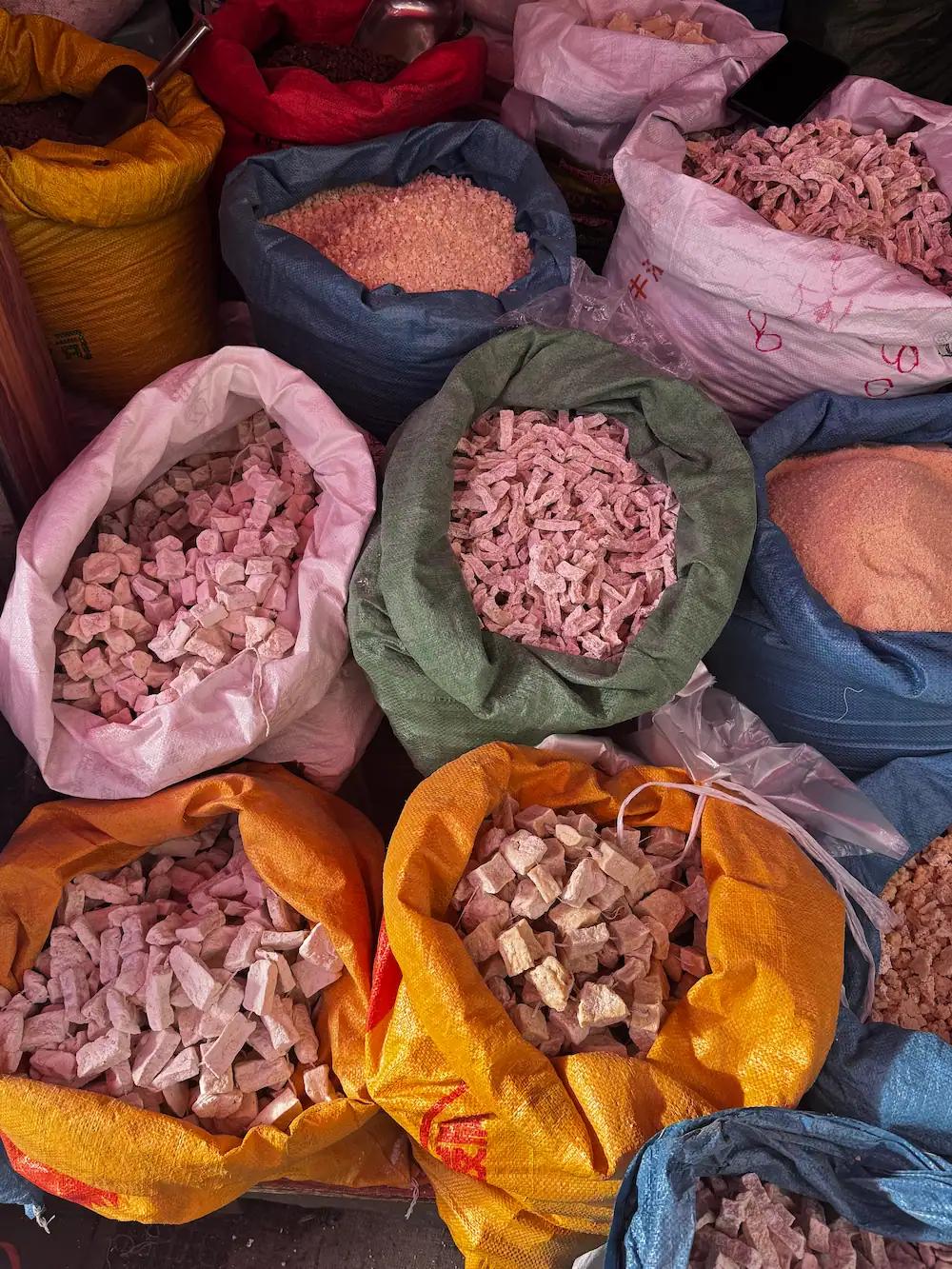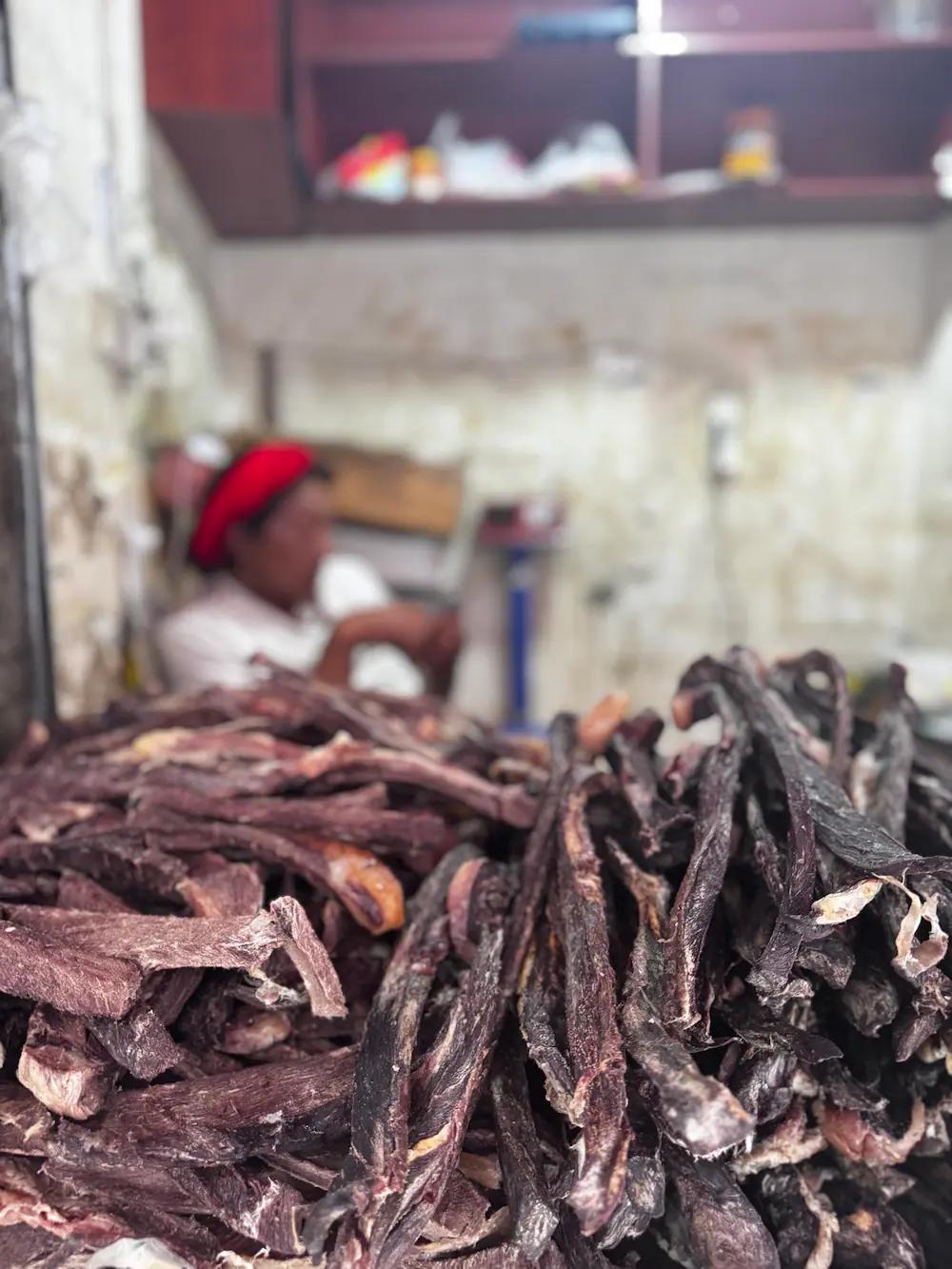From tsampa to momos, Tibetan cuisine offers travelers a delicious window into a fascinating culture.

As the saying goes, "You are what you eat," and Tibetans have developed very unique food habits that are part of traditional Tibetan cuisine spanning many decades.
When coming to Tibet for its attractions such as monasteries, temples and palaces, you must try some of the local Tibetan food, from which you can learn about Tibetan culture. Because of the high elevation and dryness of the land, Tibet is not a land of abundant vegetation, although barley is the major crop in Tibet.
The Tibetan staple food, Tsampa, is a flour milled from roasted barley. Tsampa can take a while to get used to when learning how to eat it out of a bowl. The most basic way is to make a dough out of Tsampa by adding a bit of butter tea. Pour a little butter tea at the bottom of the bowl, then put a dollop of tsampa on it before stirring it with your forefinger and kneading it with your hand.
To enhance the taste, children mostly love to add a bit of butter and sugar along with hot butter tea, while the butter melts and sugar dissolves in the hot tea, or by adding some dry crushed cheese made of dri's (female yak) milk, then putting a dollop of tsampa and stirring it gently with your forefinger until it becomes easy enough to knead with your hand and make a dough which can be eaten with butter tea, most often for breakfast.
Tsampa is the most convenient food for pilgrims from the countryside and nomads who go on day-long journeys with their herds. They carry a Thang kuk (a small bag made of animal skin) with tsampa in it—it is easier to make tsampa in a thang kuk rather than in a bowl, and most importantly, it is easier to carry around since they are always on the road away from home.
Tsampa is a great ingredient for making porridge with small pieces of yak meat and butter in it—it is the most delicious porridge, especially during the cold Tibetan winter. Tibetans like to eat stinging nettle porridge that is made with Tsampa, pieces of yak meat and butter. It is famously known as Milarepa's prominent diet during his solitary meditation in caves and mountain retreats.
Butter tea and sweet tea are important beverages in the life of Tibetans. Families start their day with butter tea at home, while others begin with sweet tea at local tea shops.
Butter tea is made with butter and a strong concentration of tea which comes in the shape of bricks. It tastes rather salty than sweet—like tsampa, it can take some time to get used to it. Due to its strong buttery taste, it is common for foreigners to feel a little headache or stomach upset after a few cups of it. In Lhasa, many families now use mixer machines to make butter tea, which is more convenient than the traditional wooden butter churner. However, in the countryside and villages, families still use wooden butter churners to make butter tea, which is believed to be more delicious.
Sweet tea is very common in almost every local Tibetan restaurant and is served in different sizes of thermos flasks rather than in glasses or cups.
Tibetan yak jerky is perhaps one of the most delicious specialty of what Tibet has to offer. Like Tsampa, it is convenient for pilgrims and nomads, you will often see them chewing it along with a bowl of Tsampa and butter tea. Family members in villages and the countryside send bags full of yak jerky to their relatives in Lhasa, with dry yak cheese and butter.

Yak Cheese
It is considered that homemade jerky is more delicious and healthier since it doesn't have any added preservatives, MSG, or artificial flavors. Most Tibetan families will have a big bowl full of jerky made from yak and sheep on their table for guests at their home, especially during Losar (Tibetan New Year). Jerky is best served with hot chili sauces.

Yak Jerky
Momo is one of the most favorite Tibetan dishes. It is said that Tibetan momo is the origin of all sorts of dumplings across the Indian subcontinent and Himalayan regions. Momo is mostly served at family gatherings or parties at home.
It takes a fair amount of work to prepare momo, but it's easier to serve at gatherings along with bone soup and hot chili sauce. Momo can be made in a few different shapes, however it is a bit tricky and takes some time to learn how to make it properly. It starts with a dough made from white wheat, by making small flat round shapes with the help of a round cup or the seal of a flask, using properly minced meat along with onions, some salt and a bit of edible oil to retain the juice of the meat in the momo.